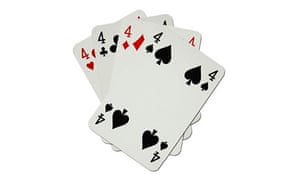
English - Advanced. This blog is aimed at advanced students and is intended to be an alternative source of information (other than the textbook and the photocopies provided by myself). This blog offers some extra material for further practice. It also contains some of the video-activities and podcasts that have been used in our lessons.
29 Dec 2019
28 Dec 2019
25 Dec 2019
11 Dec 2019
Gambling
GAMBLING
·
Do you play the
lottery?
·
What kind of
lottery do you play?
·
Do you play
football pools?
·
Do you play slot
machines?
·
How many forms of
gambling can you think of?
·
What percentage of
people gamble?
· What do you think
is the largest amount of money that people may lose when they gamble?
·
Do you bet? How
often? What's the biggest bet you’ve ever placed?
· Apart from the
obvious financial problem what other consequences can occur as a result of
excessive gambling?
· Who suffers the
most from a gambling problem?
·
Apart from the
obvious reason of winning money, why do people gamble?
·
Why is gambling
addictive?
· Do you think it is
ok to put money in machines for prizes at amusement arcades?
·
Can you think of
any techniques that may help an addicted gambler quit?
·
Should some forms
of gambling be banned?
·
Does the national
lottery encourage gambling?
10 Dec 2019
Playing cards
The four suits of a deck of cards
Cultural history of card suits:
♦ Diamonds
♥ Hearts
♠ Spades
If you count up the numerical value of a whole pack of cards –
reckoning on 11 for a jack, 12 for a queen and 13 for a king – you reach
364, which with the addition of one for the joker makes 365, the number
of days in the year. The four suits can also be read as symbols of
society and human energy: clubs representing both the peasantry and
achievement through work; diamonds, the merchant class and the
excitement of wealth creation; hearts, the clergy and the struggle to
achieve inner joy; spades, the warrior class institutionalised into the
nobility and the fractious problems of life.
The pack of cards came to Europe sometime in the 14th century, imported by Italian merchants who discovered their use during trading missions to the cosmopolitan cities of Mameluke Egypt. The symbols they imported – swords, batons (or wands), cups, and coins (or rings) – are still used in Spain, Greece, Portugal and Italy. The modern four suits seem to have evolved in France, specifically Paris and Rouen, in the late-15th century and were quickly taken up by the English. The French also added the concept of the Queen, for initially the court cards were based on the sequence of king, cavalier and servant – or, as the original Mameluke Egyptians had it, malik (king), naib malik (viceroy) and thaim naib (deputy). The triumph of the ace was another French innovation, traditionally added after the revolution in honour of the rabble toppling the king.
The Egyptians themselves seem to have developed the pack of cards from China, where numerically printed sheets grouped into four divisions can be traced back to the concubines of the Tang dynasty (618–907).
Source: The Guardian
The pack of cards came to Europe sometime in the 14th century, imported by Italian merchants who discovered their use during trading missions to the cosmopolitan cities of Mameluke Egypt. The symbols they imported – swords, batons (or wands), cups, and coins (or rings) – are still used in Spain, Greece, Portugal and Italy. The modern four suits seem to have evolved in France, specifically Paris and Rouen, in the late-15th century and were quickly taken up by the English. The French also added the concept of the Queen, for initially the court cards were based on the sequence of king, cavalier and servant – or, as the original Mameluke Egyptians had it, malik (king), naib malik (viceroy) and thaim naib (deputy). The triumph of the ace was another French innovation, traditionally added after the revolution in honour of the rabble toppling the king.
The Egyptians themselves seem to have developed the pack of cards from China, where numerically printed sheets grouped into four divisions can be traced back to the concubines of the Tang dynasty (618–907).
Source: The Guardian
4 Dec 2019
3 Dec 2019
2 Dec 2019
Rubrics for the certificate test 2019
The multiligualism service, which is part of the Consejeria de eduación, ciencia y deporte, provided us with the rubrics that were used to assess the final certificate test last course. These are the documents that we will be using until we are given the updated version:
Written production and coproduction.
Oral production and coproduction.
Written and oral mediation
Written production and coproduction.
Oral production and coproduction.
Written and oral mediation
Sport Collocations
Here, you will find a pdf document with useful collocations related to sports and sporting events.
Click here to download the document.
Click here to download the document.
Subscribe to:
Comments (Atom)










